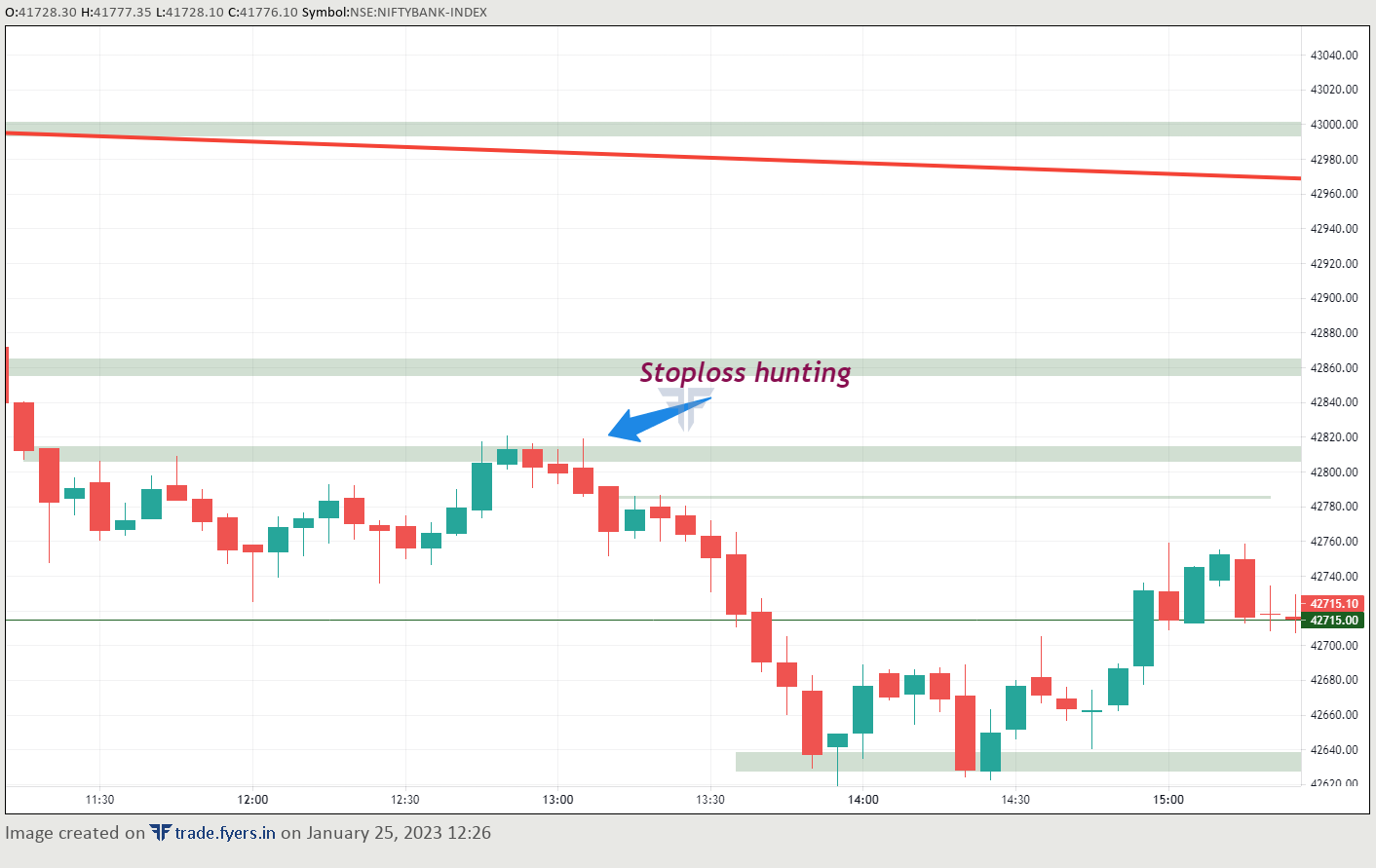Stop-loss hunting is a practice in which market participants, such as market makers or algorithmic traders, target the stop-loss orders of traders in order to trigger them and cause price movements that benefit the hunters.
Table of Contents
Stop-loss orders are a type of order placed by traders to automatically exit a trade if the price of the security falls to a certain level. The idea behind stop-loss orders is to limit potential losses in case the price of the security falls unexpectedly. However, in a stop-loss hunting scenario, market participants with access to order book information can detect the presence of stop-loss orders and manipulate the price of the security to trigger them. This can lead to sudden and unexpected price movements that can cause losses for traders who have placed stop-loss orders.
Stop-loss hunting is considered unethical and is generally frowned upon by regulators. However, it can be difficult to detect and prevent, and traders should be aware of this practice when placing stop-loss orders. To avoid stop-loss hunting, traders can use other risk management strategies such as using a wider stop loss, using a trailing stop loss, or placing stop-loss orders in such a way that they are not visible to market participants.

Here are a few ways to avoid stop-loss hunting:
-
Use a wider stop-loss: A wider stop-loss level can make it more difficult for market participants to trigger your stop-loss order. This means that you will have a greater buffer before your stop-loss order is triggered, reducing the chances of it being hunted.
-
Use a trailing stop-loss: A trailing stop-loss order is a type of stop-loss order that is set at a certain percentage or dollar amount below the market price. As the market price moves in your favor, the stop-loss level will also move up, reducing the chances of it being hunted.
-
Use a hidden stop-loss: Some trading platforms allow traders to place hidden stop-loss orders, which are not visible to other market participants. This can reduce the chances of your stop-loss order being hunted as it is not visible to others.
-
Use other types of stop-loss orders: There are other types of stop-loss orders such as time stop-loss or volatility stop-loss that can be used to avoid stop-loss hunting. These types of stop-loss orders are based on a specific time or volatility level and not on a specific price level.
-
Avoid placing stop-loss orders too close to key levels: Market participants tend to place stop-loss orders at key levels such as round numbers or moving averages. Avoiding to place stop-loss orders too close to these levels can help to reduce the chances of it being hunted.
-
Use a combination of these methods: Using a combination of these methods can provide additional protection against stop-loss hunting.
It's important to note that stop-loss hunting can still happen even if the above methods are used, and it's always recommended to use proper risk management techniques and have a clear stop-loss strategy.






